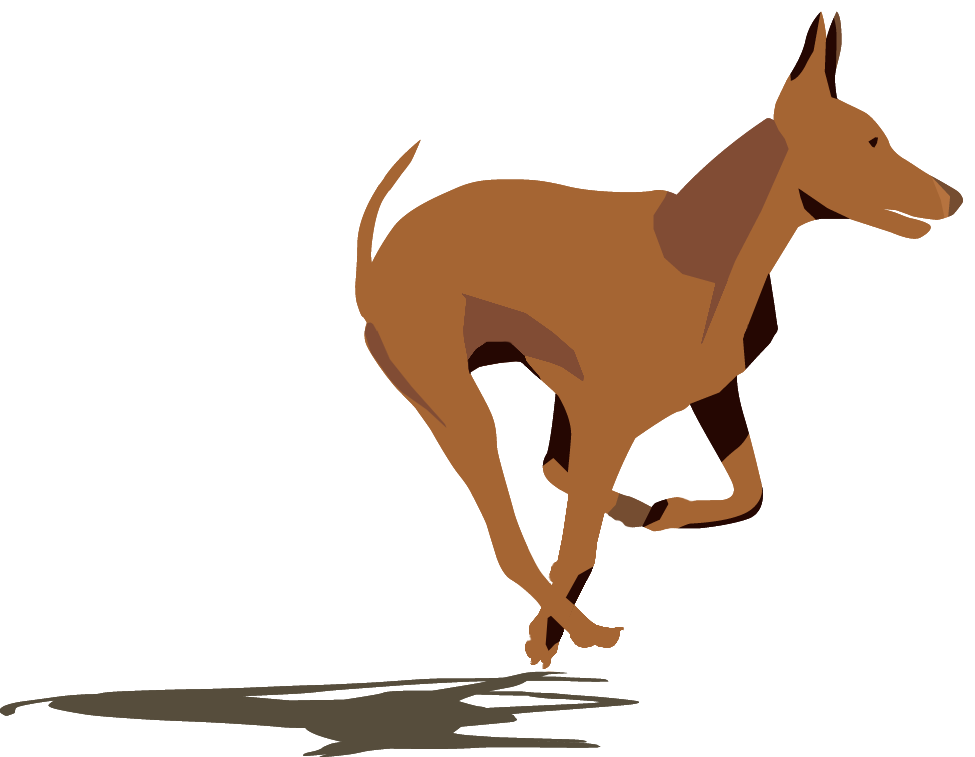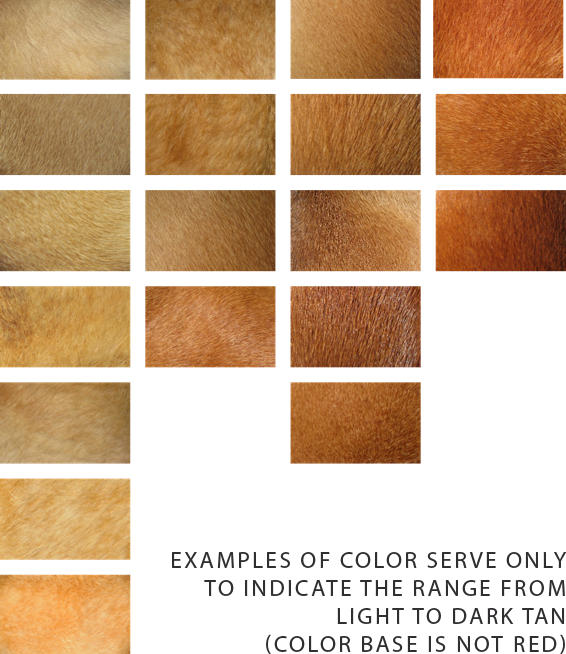
Breed Standard
The Cirneco dell’Etna is a small hound-type dog used in Sicily for rabbit hunting and commonly misnomered as the “Sicilian greyhound” when translated. It is found all over the Italian island and particularly in the area surrounding the active volcano, Mount Etna, where the dogs hunt on terrain formed by volcanic lava. Its presence in Sicily is noteworthy as one of the few ancient breeds that have undergone very little manipulation by man. Thus, the dog we have today is an extremely hardy breed, free from inherited health problems.
UPDATE:
Official AKC Breed Standard for the Cirneco Dell’Etna
Approved January 14, 2020, Effective March 31, 2020
CLICK HERE TO DOWNLOAD
The following description is that of the ideal Cirneco dell’Etna. Any deviation from the below described dog must be penalized to the extent of the deviation.
Official AKC Breed Standard for the Cirneco Dell’Etna
General Appearance: Medium-sized hunting dog, elegant, slender build but strong and hardy. Long-limbed, of light construction and square outline with a fine coat and erect ears, always alert. Honorable scars indicating a working and hunting dog are never to be penalized. The following description is that of the ideal Cirneco dell’Etna. Any deviation from the below described dog must be penalized to the extent of the deviation. Characteristics: A keen hunter. Adaptable to difficult terrain. Hunts by scent, sight, and hearing. Strong-willed, alert and an excellent companion.
Size, Proportion, Substance: Height – Dogs 18 to 20 inches; bitches 17 to 19 inches. Height not within the stated limits is a disqualification. Length from point of shoulder to point of buttock equal to height at withers.
Head: Expression – Alert expression. Eyes– Relatively small, oval in shape, set somewhat obliquely. Amber or ochre blending with coat. Pigmentation of the eyelid rims corresponding to the color of the nose. Brown or yellow iris is a fault to be severely penalized. Walleye, an eye with a whitish iris or a blue eye(s) is a disqualification. Ears – Set very high and close together, erect and rigid, parallel or almost parallel when alert. Triangular shape with a narrow tip. Length slightly less but no more than half the head. Totally hanging ears or bat ears are a disqualification. Skull – Width of skull less than one half the length of the head, in profile almost flat. Lean and well-chiseled. Stop – Slight stop. Muzzle – Length equal to, but not less than 80 percent of the length of the skull. Planes – Top of the skull and foreface parallel or slightly divergent. Nose – Bridge of nose straight. Nose rather large, flesh-colored, blending with coat. Cheeks – Flat cheeks. Mouth – Lower jaw lightly developed with receding chin. Overshot mouth or undershot mouth is a disqualification. Lips – Thin, taut lips, just covering the teeth of the lower jaw. Bite – Regular and complete scissor bite, i.e. upper teeth closely overlapping lower teeth and set square to the jaws.
Neck, Topline, and Body: Neck – Length the same as the head. Strong, clean, well arched and muscular. Set well into shoulders. Topline – Straight topline sloping from withers towards croup. Body – Chest – Reaches to, or nearly to, the elbow, without going beyond. Ribs – Slightly sprung, narrow but never flat. Underline & Tuck-up – Clean, gently rising, lean underline. excessive tuck-up is a severe fault. Back – Upper profile straight without conspicuous muscles, the length is approximately three times the length of the loin. Loin – Length of loin is approximately one-fifth of the height at the withers and its width is nearly the same as its length. Short, slightly developed muscles but firm. Croup – Croup has a flat profile, sloping steeply downwards to the root of the tail. Tail – Low set, fairly thick at the base, reaching to point of the hock. Of equal thickness for most of its length. Carried high and curved when the dog is in action; sabre fashion when in repose. The hair on the tail is semi-long and close. Tail curled over the back is a fault to be severely penalized.
Forequarters: Angulation – Shoulder blade (scapulum) to horizontal 55 to 60 degrees. Shoulders – Strong, long, moderately laid back. Shoulder blades – Upper tips close together. Length close to one-third the height at the withers. Upper Arm – Length of the upper arm slightly less than the length of the shoulder blade. Elbow – Level or below the line of the brisket and well tucked in. Legs – Forelegs straight and parallel when viewed from the front. Length just over ½ the height at the withers. Pasterns – Strong and slightly sloping. Dewclaws – May not be removed.
Hindquarters: Strong and muscular. Limbs parallel when viewed from behind. Angulation – Not excessively angulated. In profile a vertical line from the rear point of buttock to ground close to or touching the tips of the toes. The angle between the pelvis and upper thigh is about 115 degrees. Legs – Upper thigh – Broad, long, upper thigh with flat muscles. Stifle – Moderate bend of stifle. Second thigh – Slightly shorter than the upper thigh. Lean and distinct musculature with a light bone structure. Groove at Achilles tendon well marked. Hock joint – Angle at the joint is about 135 degrees. Hocks – Wide outer surface, cylindrical shape, and vertical position. Length from the sole of foot to point of the hock is just over a quarter of the height at the withers. Dewclaws – Absent.
Feet: Strong, well knuckled, firm, slightly oval, turning neither in nor out. Pads – Well padded, hard and of the same color as the nails. Nails – Brown or flesh-colored. Black nails are a disqualification.
Coat: Short on head, ears, and legs. Semi-long (about 1 inch) on body and tail, but sleek and close, ranging from fine to slightly coarse. No feathering.
Color: Self-colored light to dark shades of tan, with a mixture of slightly lighter and darker hairs, or tan with white blaze or mark on the head, chest and/or throat, white feet, point of tail, and/or belly. A white-collar is less desired. Total depigmentation, self-colored brown or liver; brown patches or hairs; brindle coat: or any presence of black, whether patches, hairs, or pigmentation including of mucous membranes, are a disqualification.
Gait: Springy trot without excessive extension. Viewed from behind, hind legs track the forelegs. A tendency to throw feet sideways or hackney action undesirable.
Temperament: Strong, lively, independent temperament. Gentle and affectionate.
Disqualifications: Height not within the stated limits: Dogs under 18 inches or over 20 inches, Bitches under 17 inches or over 19 inches. Walleye, an eye with a whitish iris or a blue eye(s); overshot mouth or undershot mouth. Totally hanging ears or bat ears. Total depigmentation; self- colored brown or liver; brown patches or hairs; brindle coat: or any presence of black whether patches, hairs, or pigmentation, black nails, or mucous membranes.
Approved January 14, 2020
Effective March 31, 2020

